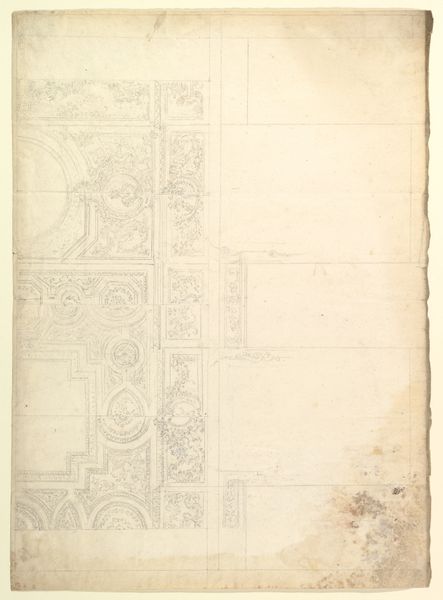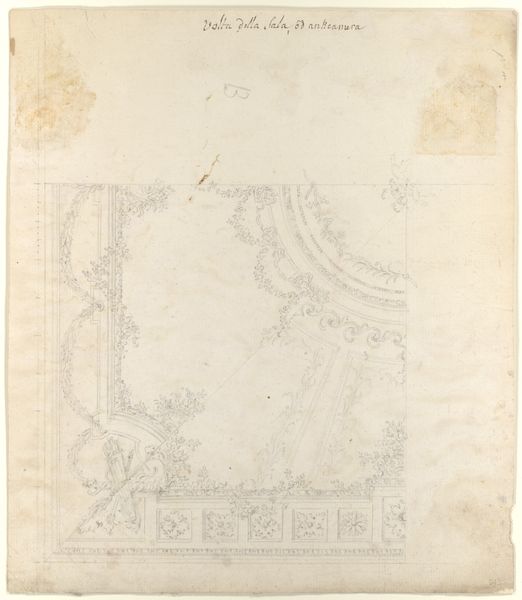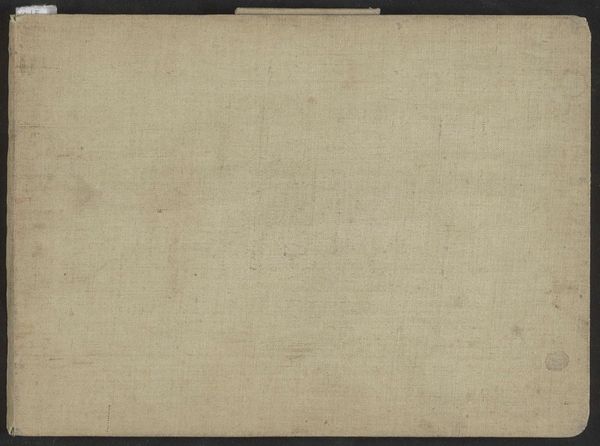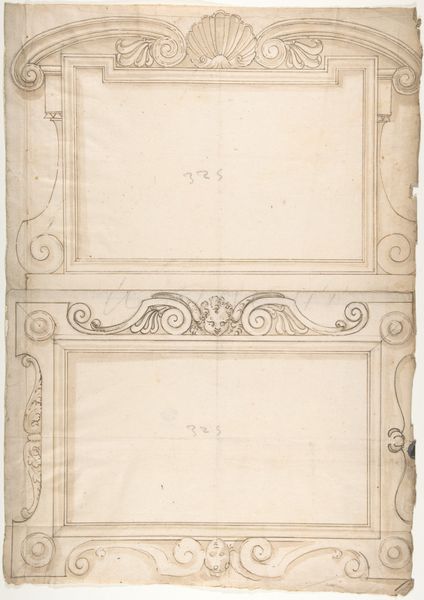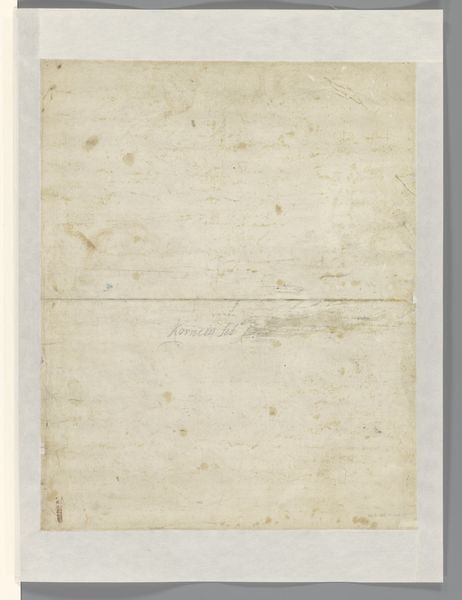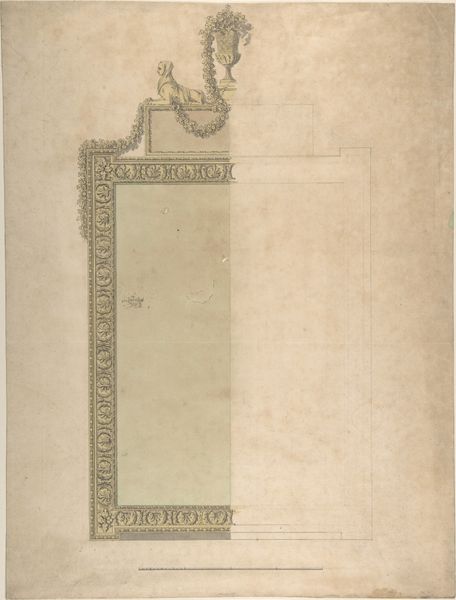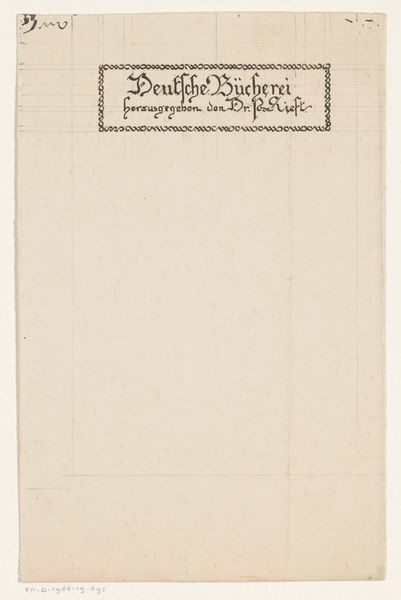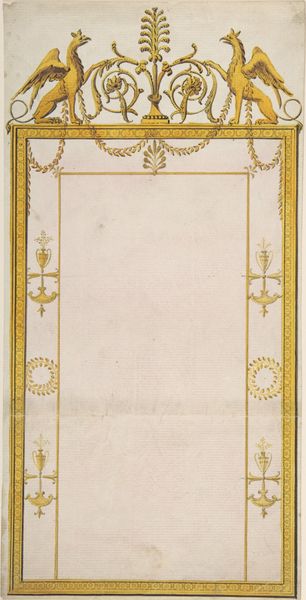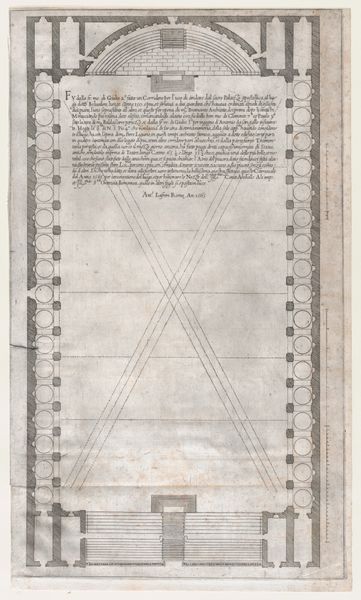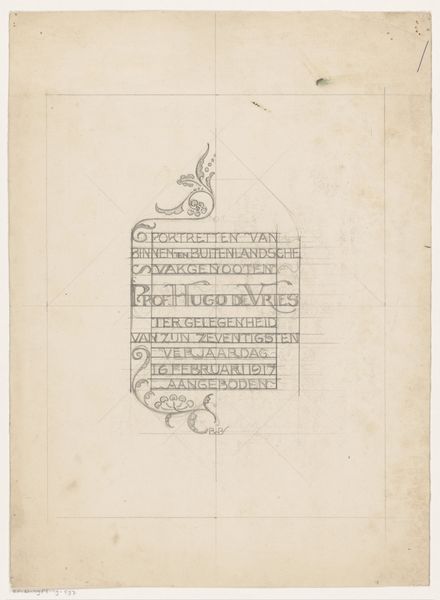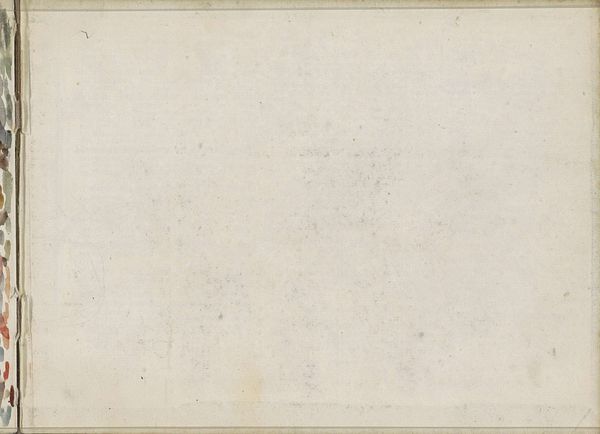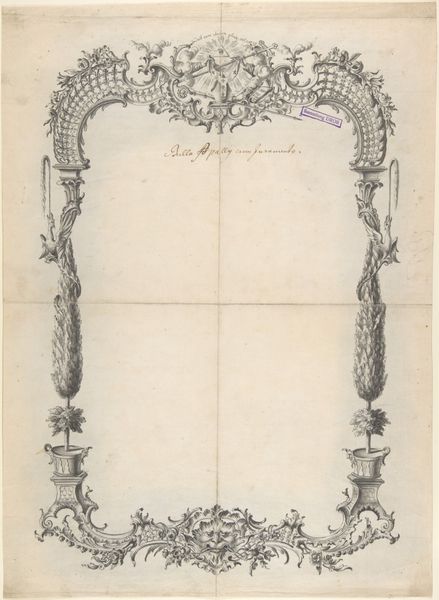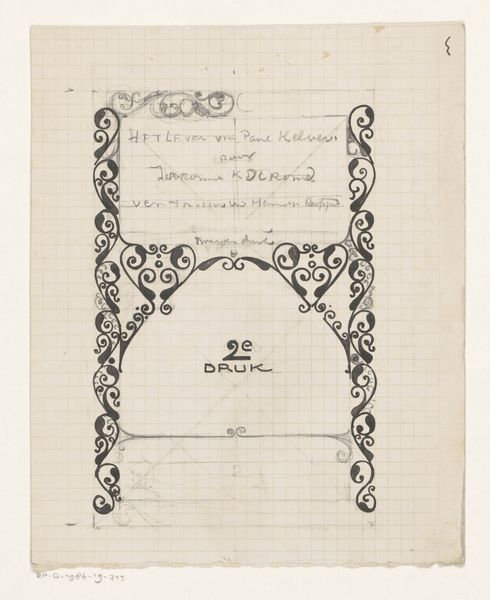
drawing, print, ink, pen, engraving
#
drawing
#
ink painting
# print
#
ink
#
coloured pencil
#
pen work
#
pen
#
history-painting
#
engraving
Dimensions: sheet: 7 13/16 x 5 11/16 in. (19.8 x 14.4 cm)
Copyright: Public Domain
Curator: Here we have “Design for Border with Religious Scenes,” a 17th-century drawing currently residing at the Metropolitan Museum of Art. What are your initial thoughts? Editor: I'm struck by the emptiness at the center of this frame. It looks almost like the stories and the craftsmanship that’s gone into producing the frame is somehow divorced from the negative space within. It raises questions about the value we place on these kinds of skills in this time. Curator: Absolutely. Considering the religious scenes depicted, let's contextualize this. These visual narratives weren't merely decorative; they served as powerful didactic tools, reinforcing faith and social norms in a world grappling with massive religious and political upheaval in the wake of the Reformation and Counter-Reformation. Who was this speaking to, and what rhetoric do we assume? Editor: Exactly! What ink was used? What kind of pen or engraving tool created these lines, and who had access to such materials and skill? This points to issues of class, access, and the power dynamics embedded within the production of religious imagery, questioning who had the means to commission or even create such works. What processes were adopted here? Curator: The use of religious imagery here reminds me how frequently marginalized communities were depicted, with Biblical scenes that emphasized redemption and acceptance within a complex hierarchy, using faith as both solace and a mechanism of control. How do these stories about sacrifice and piety echo today? Editor: I think we have to confront its physicality head on. To me, the real interest here isn't simply in deciphering the iconography, but in interrogating the labour and resources that underpinned its creation and consumption, and in seeing how value is materially constructed. Where do we find our cultural meaning? Curator: It is such an interesting point, thank you for providing that new layer. When we delve into the stories of women artists from the era or uncover the political statements made with art—or hidden from plain sight, in its details, in this period—we gain a richer appreciation for art's multifaceted roles. Editor: It prompts me to reflect on our own relationship with images, craftsmanship and the material world today. And it leaves me to question this moment’s place in history, as something that holds cultural value.
Comments
No comments
Be the first to comment and join the conversation on the ultimate creative platform.
